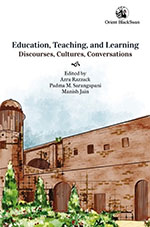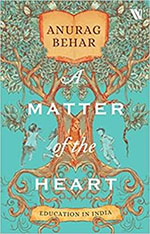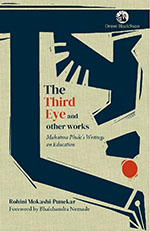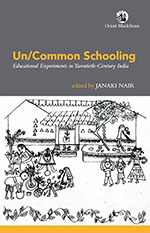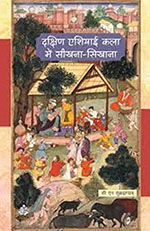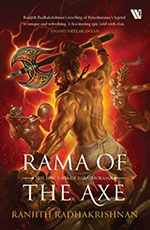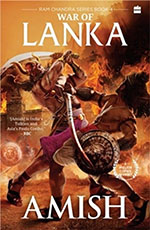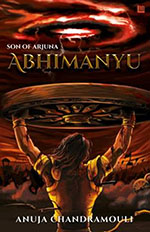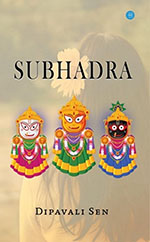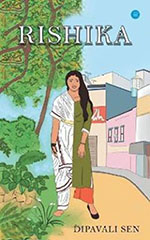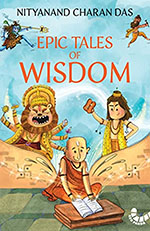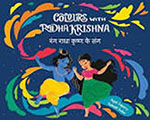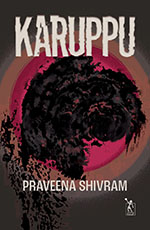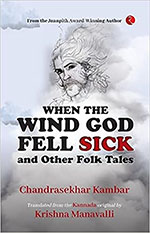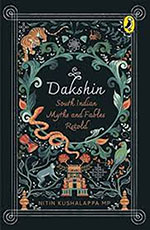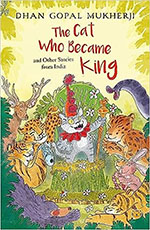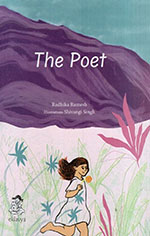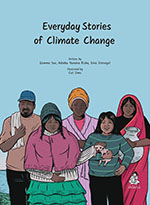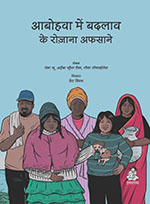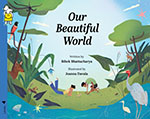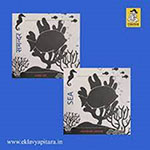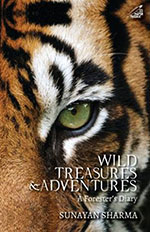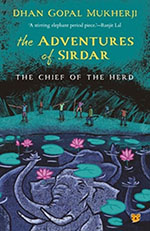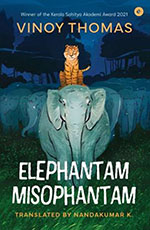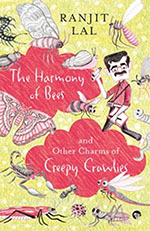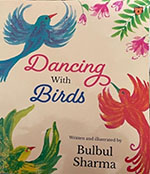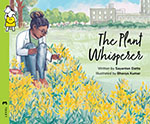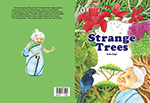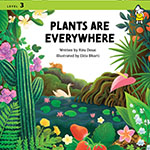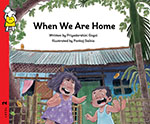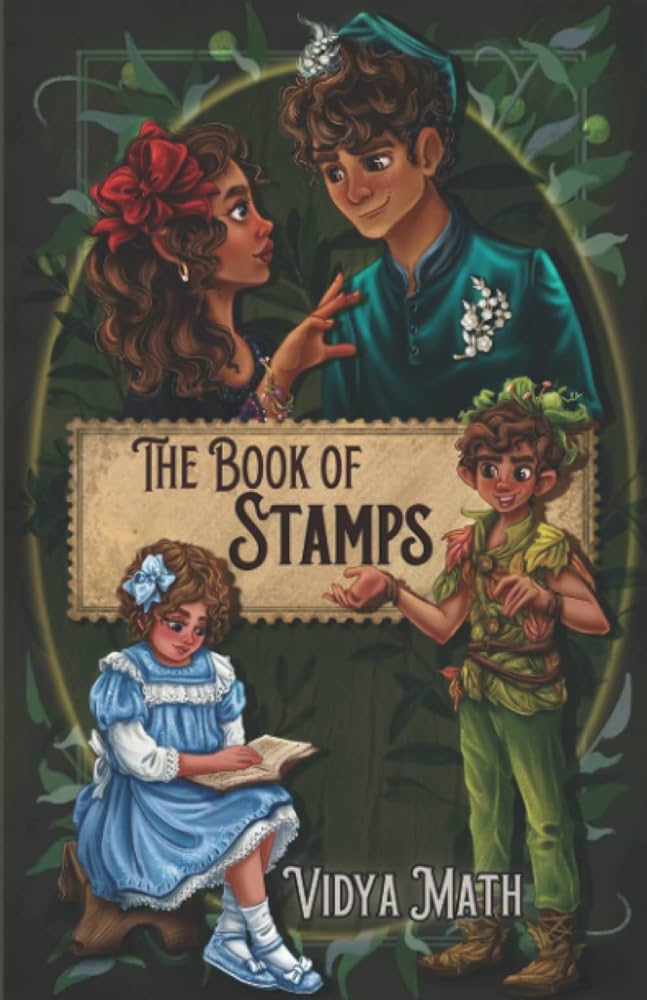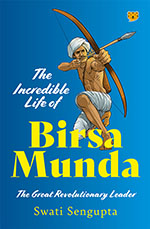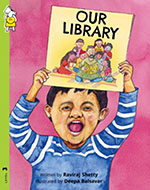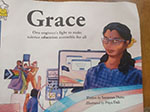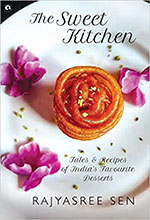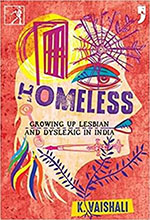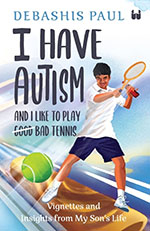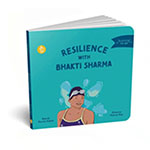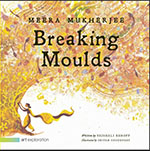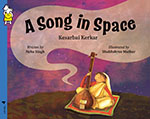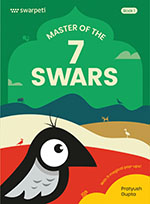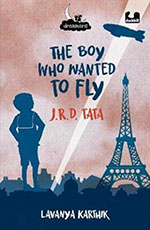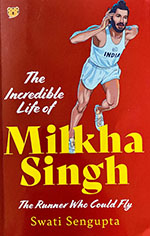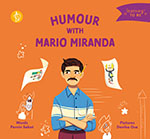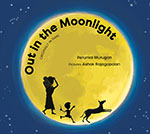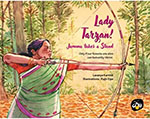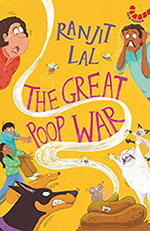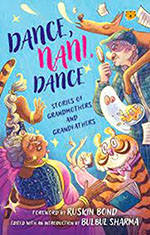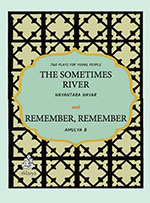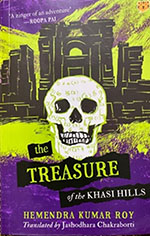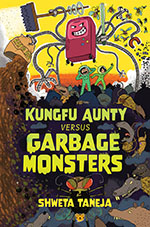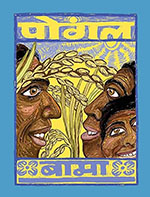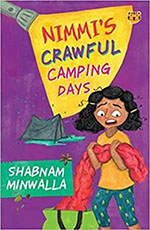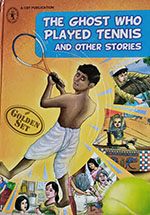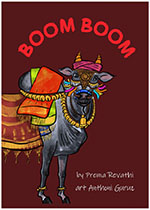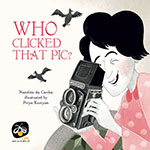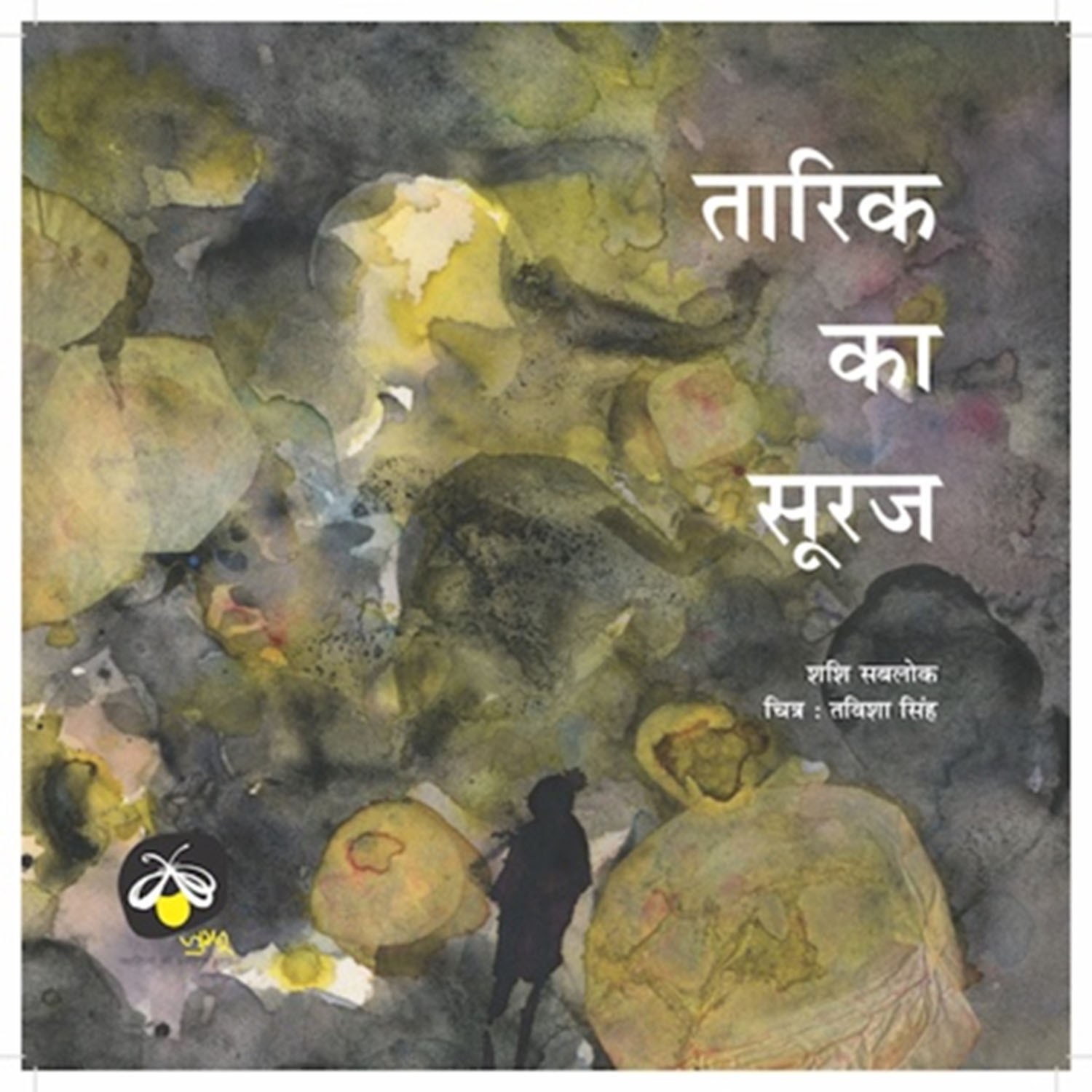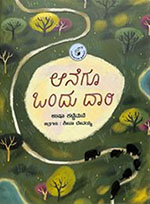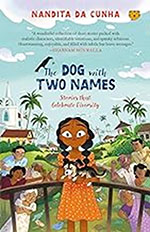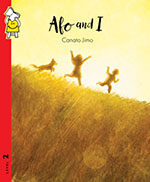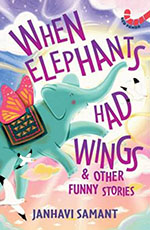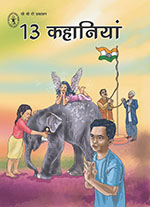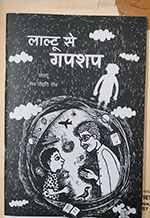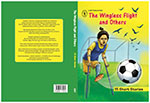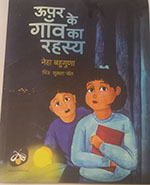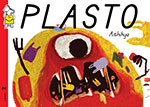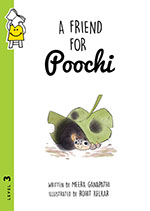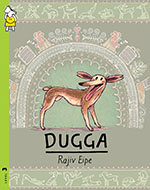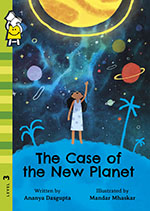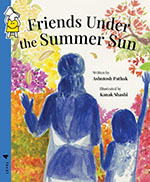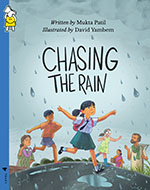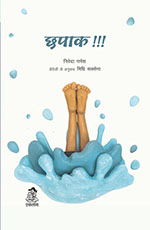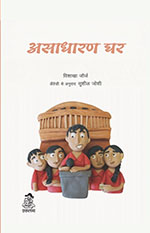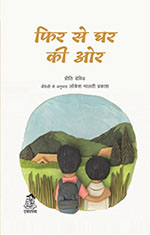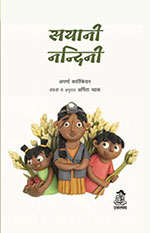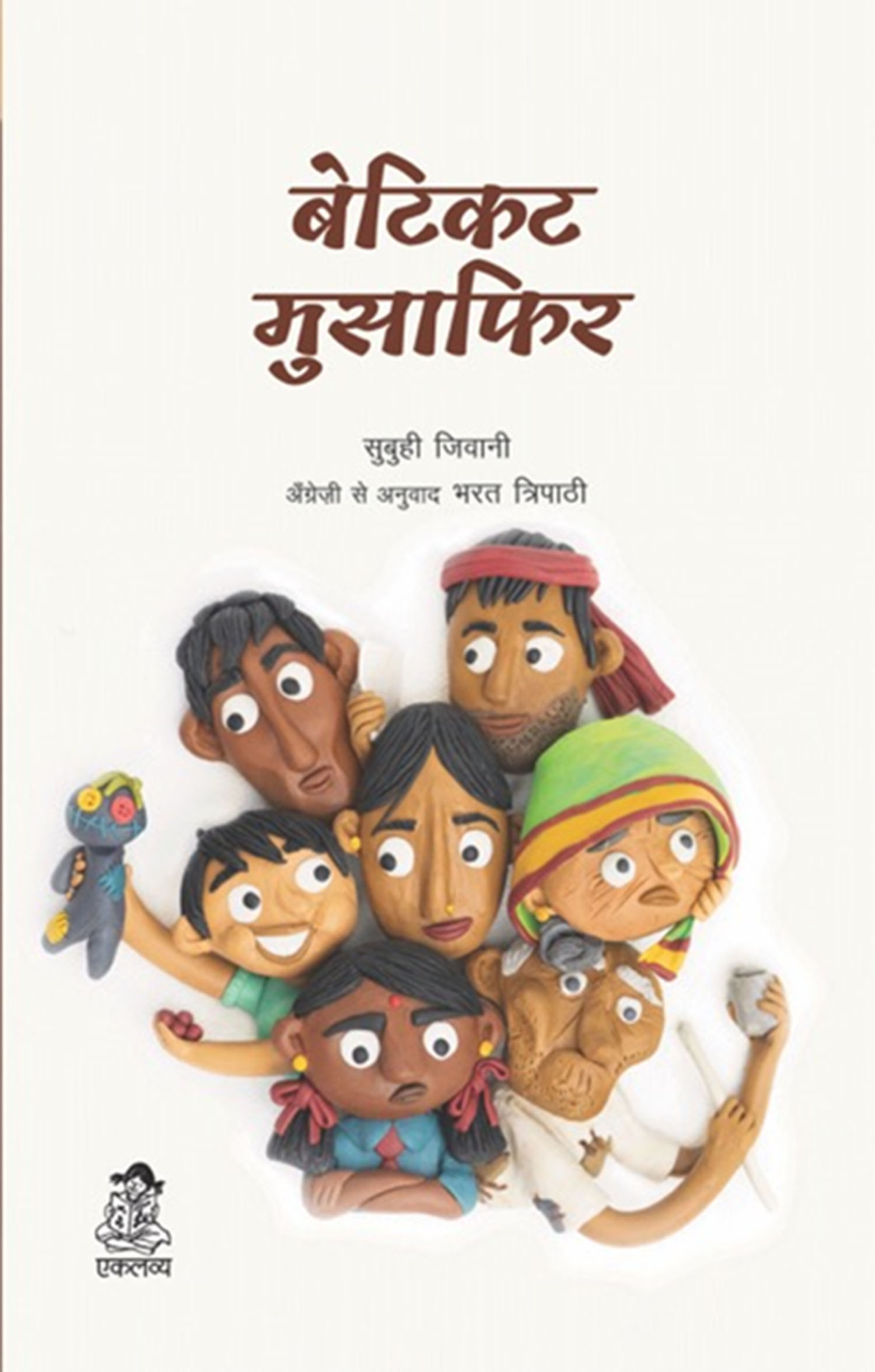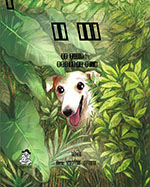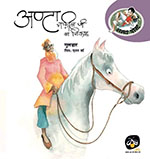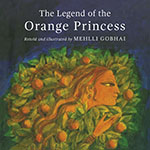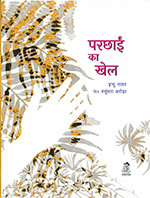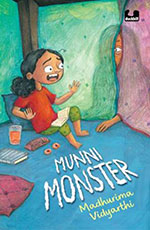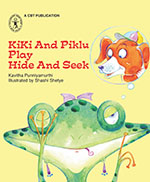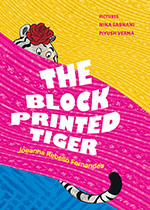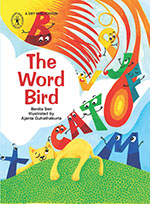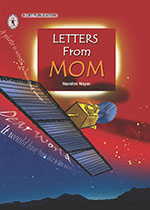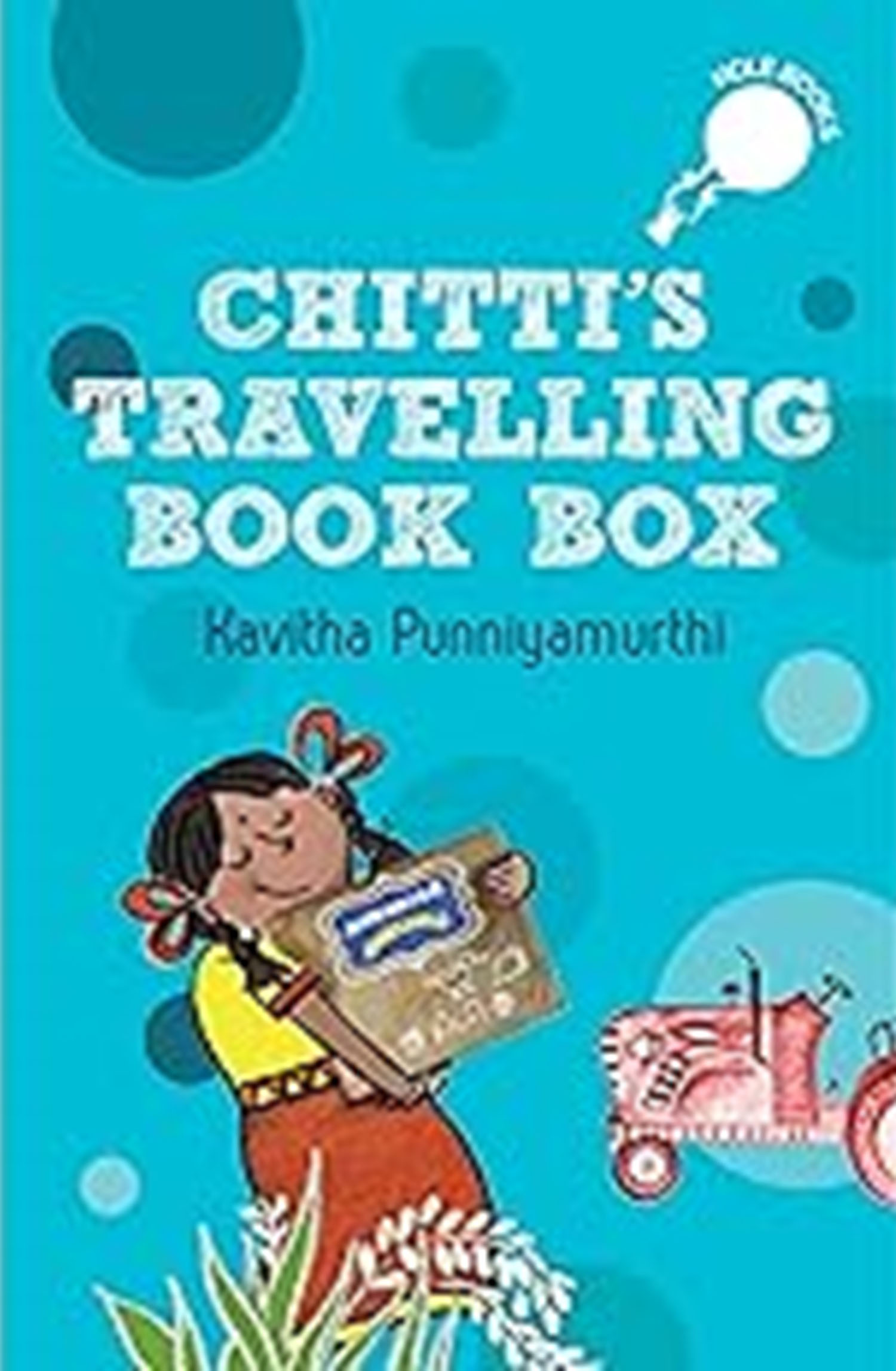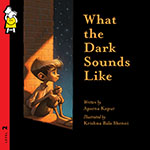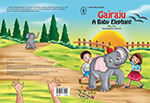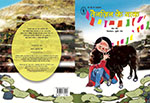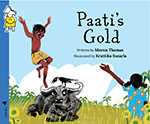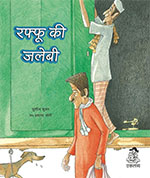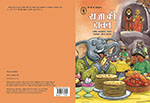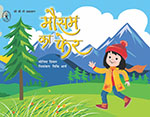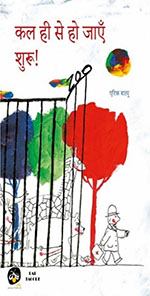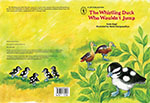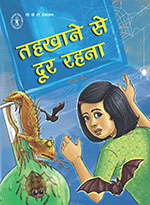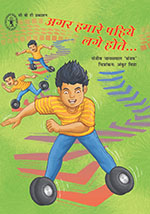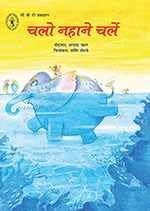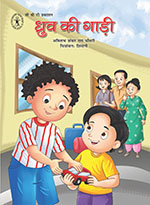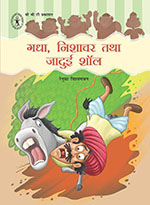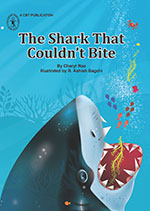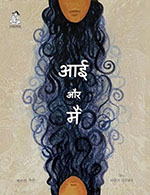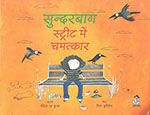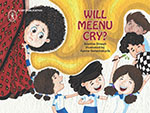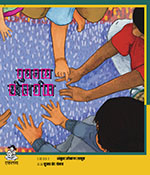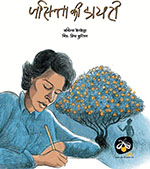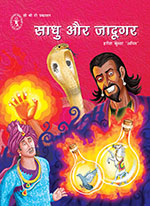This book is a collection of essays in honour of Professor Krishna Kumar, doyen in the education world in India, by his former students and colleagues. The Department of Education (or the Central Institute of Education (CIE), as it is more popularly known) is the premier Department for Education Studies in India including the professional courses of B.Ed. and M.Ed, in its academic programmes.
Archives
November 2023 . VOLUME 47, NUMBER 11Anurag Behar has a rich experience in the field of education in working with Azim Premji Foundation and travelling extensively at the grassroots level. Like others who have worked in the field, he points out quite rightly, good education is in the end, ‘A Matter of the Heart’.
In the middle of the 19th century, Savitribai and Jotirao Phule began their systematic critique of how they believed caste, gender, and power worked together to suppress women, Shudras, and Dalits. Faced with the prospect of trying to change an ancient system accepted as normal by millions of people, and etched into all aspects of everyday life, the Phules started small: they opened a school for girls in Bhide Wada in Pune in 1848.
Mainstream education in a society as stratified and diverse as ours finds it often difficult to reach children of geographically remote and socially marginalized communities.
This book on the historiography or rather a social-cultural history of education is a rare example of this phenomenon. Subramanium is interested in how education has been imparted over a long duration of history. He begins from the ancient, traverses the medieval and ends with the colonial period.
This novel shows us the coming of age of Parashurama in a coherent way in a beautiful narrative. Fans of fantasy books should be the first to grab a copy, because it has all the ingredients of a truly iconic mystical story. The mystery of ancient prophecies, the beauty of powerful weapons earned through dedicated meditation, the strength of pure family bonds, the satisfaction of finding one’s path through effort and self-realization, the aura of mythical kings and priests, and epic battles between good and evil bring out magical realism at its finest.
This is the fourth book in the Ram Chandra Series written by the well-known writer of mythology, Amish Tripathi. Although the thrilling saga of the great story of Rama has already been covered in other volumes of the series, this book, the final part of the series stands alone as captivating fiction. Once I started reading, it was unputdownable, crisp and riveting.
Here is a study of Abhimanyu by a young author, Anuja Chandramouli, from Tamil Nadu. She brings a burst of fresh energy to the understanding of the Mahabharata in modern India as initiated around late 19th century. Through around ten best-selling books as well as YouTube presentations, she is fulfilling this very essential task of connecting the youth of today to historical and mythological figures
2022
Here is a book by Dipavali Sen that takes us on a long and wonderful journey, back to the times of the Mahabharata, as seen through the eyes of Subhadra who plays many pivotal roles—as the daughter of Vasudev and Rohini, sister of Krishna and Balarama, the wife of Arjuna, the mother of Abhimanyu…and right down to her deification as an idol at the Jagannath Temple in Puri.
All this takes place within the framework of a modern setting in Gurgaon.
2022
An unusual theme coming from a talented writer made me hold the book in my hand and turn it around staring in bewilderment at the arresting title and also the cover design that depicts a woman clad half in an ancient garment and half modern. I started reading, turning the pages with avid rapidity.
Hinduism as we call it today has been known as Sanatana Dharma to the ancients. It has shown people from time immemorial the right way of performing worldly duties that are sustained by value-based restraints and natural laws. To explain the how and wherefores of this, Vedic systems were born.
Picture books hold a special place for children. They are a tool for learning, a visual journey, the basis for story time with family and a tactile resource for sensory exploration.
2023
How do you review a book like Karuppu? I’ve asked myself this question ever since I finished reading it. Last page read, book shut…and there I am, left with a feeling that I have yet to emerge from a fog-shrouded mystical world, sprinkled with violence, poignancy, tragedy, micro-stories of relationships filled with sharp shards, and a sense of something ending. Alongside are clearly etched images,
Chandrasekhar Kambar, though recognized as one of the foremost Navya (modernist) writers in Kannada, along with the likes of UR Ananathamurthy, P Lankesh, Girish Karnad, Ramachandra Sharma, Shantinath Desai and KV Tirumalesh, was always different from them.
Since the emergence of Folklore Studies in the nineteenth century, the study of folklore grew exponentially in the twentieth century and continues to thrive through academic as well as popular literature in the twenty-first century. In the context of India, there is a sizeable market for books dealing with oral traditions as in recent years
Even our brains are not good enough unless our hearts are calm. You must try to sharpen your wits. But, above all, be calm. If you are calm, nothing can frighten you…Our fear kills us before we are killed by an enemy. He who is without fear has no enemy.
2023
In her first-person account, Andrea mentions where she finds Carlos. She defines the dark, unreachable place that he holds her in. She calls him his ‘teacher’. While it is clear that more than being her teacher, Carlos is the dictator of her life. Quite early on in the narrative, the readers get to know that Andrea has recently lost her mother. Carlos seems to have taken birth as a response to that traumatic event in Andrea’s life.
It is challenging for anyone to grasp the gravity of the impact of the climate crisis on our planet. It is even more challenging to share these concerns with children and students without it becoming overwhelming or depressing.
The story of Climate Change and its impact is not very old. It is a by-product of our development in recent years. However, the debate around it and the issues related to it are reduced to sloganeering and jargons in the developed world community.
2023
A few weeks ago in Himachal Pradesh, this year’s monsoon flooded towns and swelled rivers, causing buildings and bridges to collapse, entire mountain sides to cave in, and cars and concrete structures to be washed away in an angry, muddy, and swollen Beas. It was a harrowing reminder of what we humans do to the land we live on.
Board books are one of the first ways in which a baby encounters printed words. It’s through these books that a fundamental journey of decoding, and making meaning begins. Board books with their sensory experience of touch, visual contrast and animation, bring joy and excitement to a child’s learning experience.
Editorial
Reading Wild Treasures & Adventures: A Forester’s Diary feels like stepping into the cosy home of one of your parent’s friends, who has the most captivating profession.
The Adventures of Sirdar is an interesting story about the life of a herd of wild elephants. It begins with the dramatic selection of ‘Sirdar’, a thirty year-old male elephant as the youngest leader of the herd and his life from then on. The author, Dhan Gopal Mukherji, describes how Sirdar leads his herd.
The forest department wanted to capture Lightning Tusker. But he is no ordinary tusker, and the most experienced experts are summoned to do the job. And at the end of this insufferable 107-page novel, they fail. This novel could not have been more than 20,000 words but I struggled to finish it.
A freely roaming centipede in the bathroom or a happy family of lice in our hair is the stuff of nightmares and feverish dreams. In horror, we often ask, ‘Why on earth do we need a mosquito?’ As it is with mother nature, there is always an answer. Turns out, there would be no life on earth without these seemingly disgusting and terrifying little beings. Biologist and Naturalist EO Wilson rightfully called them, ‘the little things that run the world’.
All of 16 pages, this children’s book is one that must find its rightful place in every library across schools and homes. It is appropriately narrated without any purple prose, and it is about big, old and ancient trees. No poem has a single unnecessary description and the message conveyed is deep to arouse the child’s curious mind.
The tile itself is an invitation to the child, as well as the reading and thinking adult, to move away from the obvious. Trees surround us, many of us have seen saplings grow into trees that today provide shade and comfort during summer months, and yet, few of us have the time to think about trees more deeply.
The book gives us a window into Jaishree’s world—both professional and a bit of personal. As a child, she was sensitive, loved climbing up trees and being close to plants and nature in her grandmother’s garden. Even after growing up, she fondly remembers a tree that was her ‘friend’.
2022
How much do we know about the trees in our surroundings? Strange Trees may make you ask this question and look around. Set during a school summer vacation in the fictional Suryanagar village, this book explores the interdependent lives of trees, birds, animals, and humans.
The dominant colour for the book cover, green, sets the tone for the book. The illustrations and the text do a fabulous tango together, bringing alive the world of plants for young readers.
2023
Every year the State of Assam loses large tracts of land to yearly floods and land erosion. Lakhs are displaced and loss of property is on a large scale. Many have witnessed the vanishing of their home and hearth in the middle of the mighty Brahmaputra. Many are forced to live in relief camps while others are compelled to search for newer habitats. This mobile impermanent life is a lived reality for thousands of families in Assam.
The central plot of the story revolves around eliminating the hunters from the Zohor Kingdom and having good triumph over evil. Math has woven the story in such a seamless way that the reader, until the very end, is left wondering, ‘How does Harry know things about Othelia?’ ‘How are their worlds interconnected?’ and so on. The reader is expected to pick up on hints throughout the story, which makes the book engaging and fun.
Our Constitution, Our People by Harsh Mander is a timely and insightful introduction to the Indian Constitution, designed specifically for the young. The book successfully distils the essence of the Indian Constitution, making it easily accessible without being pedantic.
Birsa soon returned to Chalkhad and began to speak to the villagers. He emerged as a spiritual leader who spoke about social reforms. People began to listen to him and to believe in him. They flocked to hear him and soon he came to be called ‘dharti aba’, father of the earth. Birsa’s popularity alarmed the British.
2023
Our Library is a visual treat, with each page unfolding a different facet of the space and people’s relationships with and within it. This library is not a quiet, didactic space of surly adults who hush the young readers; instead it’s a space of whooshing, tumbling, chattering and laughing. It’s a library that belongs to its young readers, i.e., in a true sense–‘our’ library, since the young readers form the main cast of this book with adults who help them, sometimes make reading tables, sometimes make quiet reading dens, and other times translate books to make them more accessible.
For those not familiar with Grace Banu, she is a Tamil Nadu-based transgender and anti-caste rights activist, who fought and won the case for getting the transgender community the right to study medicine like any other student. Her life is a true illustration of grit, determination and courage to challenge the gender and caste biases that still exist in our society. This storybook has been made very creatively, with the illustrations and text being in complete sync.
The book under review is a sweet interaction between the past and the present. The book takes the reader through the cultural and historical on sweets popular in various parts of India. The diversity of sweets in their varied shapes and textures together prepare each chapter with a historical base topped with its present understanding and existence and then generously sprinkled with the recipe towards the conclusion of the chapter.
Homeless, a memoir, is a book about a young woman struggling with coming to terms with the complexity of her life. Although how much of it is autobiographical has not been clearly mentioned in the book,
Imagine one morning you find a spacecraft (belonging to 3023) landing in your back garden. What would you do? You may start with some hypothesis and try to figure out what this is. You may try to open the doors with the tools you have. Understanding Autism is also like that.
India has just finished its campaign at the 19th Asian Games in Hangzhou, China, with a total of 107 medals, its biggest-ever haul at a single edition. Out of the 28 gold medals won, 9 were bagged by women/women’s teams and 1 mixed team. Similarly, out of the 38 silver medals won by Indian players, 17 were won by women (teams) and 2 mixed teams and among the players winning the 41 bronze medals 19 were women or women’s teams and 2 mixed teams.
Meera Mukherjee was a sculptor from India who was known for her innovative bronze casting technique which she learnt from the Bastar sculpting tradition of Chhattisgarh. The book traces her journey from her childhood days and presents a glimpse of the artist’s life and pursuit for sculpting.
2023
This book gives wings to a child’s wishes. They imagine themselves to be a number of things apart from what they already are. We see quite a range in these imaginations, for instance, a cup of tea, atwelve-armed octopus, a sneeze, a tadpole’s tongue, a question mark, a smelly sock…and many many more.
This is a good introduction to the celebrated vocalist Kesarbai Kerkar and a story about how her recording of Raga Bhairavi ‘Jaat Kahan Ho’ was included in a disc that was sent into space.
What could be more exciting than a book filled with vivid illustrations? A book where the pictures pop to life right from the pages! What if I tell you that there’s a pop-up book wherein you can incorporate both light and sound into your storytelling? The book published by Pratyush Gupta, an interactive pop-up book for children (and grown-ups alike), not only takes readers on a captivating adventure but also serves as a bridge to the enchanting world of Indian classical music.
Biography is an evergreen genre. The urge to know about famous people’s lives seems fairly insatiable as can be seen from any major publisher’s list. And yet, these slim books by Lavanya Karthik manage to stand out, for they deal not with the great glories of the famous persons they are about but with small occasions from their childhood that sowed the seeds for the direction their lives would take in the future. Each story is crafted from the perspective of the child that was.
Editorial
When the list of books for review for TBR 2023 was shared, the title of this book attracted me, as this is a biography and I love reading them! Secondly, there are many books written on the life of Milkha Singh and I was curious to see how one written for children would present the life of this iconic athlete.
Humour with Mario Miranda is a picture book thick in board page format. The text focuses on Mario’s growing up years and the themes in his art. Mario was fascinated by the everyday characters he encountered, life and its traits, families and cityscapes. Like other texts from the Learning to Be series, this book is a biography in fragments.
Out In the Moonlight is the adaptation of a chapter from noted Tamil author Perumal Murugan’s book Thondra Thunai, published in the English language as Amma.
What can a single woman do on her own? The question can also be posed as ‘can a single human do anything significant by themselves after all.’ The story of Jamuna Tudu is one such tale. Lavanya Karthik has presented Jamuna’s story in a very interesting manner.
Set in the ubiquitous apartment complex peppering our cities, The Great Poop War story revolves around a mystery pooper in Skyline Apartments.
The title caught my eye! So did the theme of the book when I read the blurb. Excitedly, I started the book. Written for fluent readers and young adolescents this has imagined stories and real-life events, brought to us by 15 authors, all carrying their own charm of storytelling.
This book is the outcome of a residency programme for playwrights in 2021 through a collaboration of ThinkArts, Parag and Eklavya. The unintended backdrop of this residency was the Covid 19 pandemic, so it is not surprising that the subject of these two plays has a sense of urgency to reimagine how our relationship to nature could be reordered.
These scenes take place in the opening chapters of The Treasure of the Khasi Hills, a story written by the renowned Bengali author, Hemendra Kumar Roy. It was first published in 1930 as Jawkher Dhawn meaning ‘The Yaksha’s Treasure’.
Aaah! Lizard’, was my expression when I saw one in the kitchen. But as I kept looking at it, I observed it looking at the fruit flies and that brought about a realization for me: It was there because of those fruit flies hanging around my food peels bin near the kitchen sink. After I ate my food, the flies had found their food and the lizard found its in turn.
Deepa Agarwal’s Traveller’s Ghost is the story of three teenagers—Kriti, Mohit and the journalist Neel Pargat. The story starts in the hilly town of Banari where the families have gone for a holiday.
2021
Festival: the very word conjures up images of good food and new clothes. And yet, whose is the celebration? What does a festival mean to the dispossessed, the marginalized? Bama’s Pongal takes this head on, with the very first sentence, ‘Pongal after Pongal, Madasami would pay his respects to his landlord and do whatever he had to, as tradition demanded.
Twelve-year-old Nimmi Daruwala is not an outdoorsy person. However, Mr Bakshi, the ‘kind and enthusiastic’ Principal of Vidya World School, decides that a Team Building Camp would be the best way to launch the school year for troublesome Grade 7.
Many of the stories in this collection are designed to attract young readers, including the reluctant reader! The humorous story that gives the book its title, ‘The Ghost who Played Tennis’ by Santhini Govindan, opens with the tantalizing statement, ‘Shankar did not believe in ghosts until he met one.’
2022
Boom Boom is the story of Sura, a young boy living with his mother in Velankanni in Nagapattinam. He spends his days selling stickers at the Velankanni Church, playing with his friends, and climbing coconut trees.
Who clicked that pic? If there is a question in the title of the book, then there is bound to be curiosity. Today, when mobile cameras are common in most hands, older readers will be nostalgic seeing the cover, and younger readers full of regret that they did not get to see this two-lens heavy weight camera.
Children are always restless and ready to go out and play, be it day or night. Tariq also wants to go out and play at night but does not have permission to do so. Then he comes up with a plan! But his plan creates a problem for the old, wise Owl.
2023
Kannada has seen a long tradition of writing for children starting with the 1845 publication of a translation of Aesop’s Fables followed by the first book for children written originally in Kannada, a book of moral stories by MS Puttanna, the Nitichintamani that was published in 1884.
While Nandita’s short stories have been published in collections like Talking Cub’s Dance, Nani, Dance, this is a first book which is entirely a collection of her short stories.
2023
These words from the book offer a beautiful summary of the story that is Afo and I. At its heart is Vinoka and Afo’s sibling relationship. Jimo superimposes Vinoka’s feelings about his sister Afo moving away with changes happening in their landscape.
It is indeed a special feature of stories that they travel, continuously; passed on from one generation to the next. With time and with the tellers, each story gets a new addition to it, appearing more and more relatable to the listeners.
2023
13 Kahaniyan is an enriching compilation of 13 stories in Hindi, each carrying valuable lessons, meticulously curated and edited by Kusumlata Singh and published by the Children’s Book Trust. Within this literary treasure-trove, the stories paint a vivid picture of diverse societal issues and human experiences.
The three books strung together can be read in continuation with one another. Laltu Se Gupshup has curious questions and observations of children yet to touch their teens, their little world cocooned around parents and their interactions to the sun, moon and the stars. Tuntuni and The Uprising deal with simple yet important issues of our everyday lives.
Children’s literature reminds one of life’s simpler joys and how everything is driven by curiosity alone. The book Wingless Flight and Others is published by Children’s Book Trust, a publication house founded by cartoonist K. Shankar Pillai in 1957.
Here is an interesting title capturing all the necessary elements that evoke interest to pick a book to
Read: mystery, wonder and mention of a strange unique place, the Uparwale Gaon. The author has not only succeeded in arousing interest through the title, but she also manages to sustain it throughout.
2022
This joyful little book by Rajiv Eipe is the perfect way for a young reader to enter the magical universe of books and reading, by being transported into a world seen from the wonder-filled eyes of a little boy.
2023
Aithihya’s abstract art amply illustrates the theme and intent of this little ‘wordless’ book as the young reader is shown rather than told, about the monstrous impact of all the plastic we so thoughtlessly litter our world with. The Cyclops-like creature is the eponymous Plasto who devours our waste with voracious delight and assumes awesome proportions as its gluttony finds enough to satisfy it. Very soon the monster becomes bigger than the human beings on the page and turns into a real threat as it dominates the landscape and takes over. Since this is a book for young readers, the dystopian images are effectively balanced with a solution, the eco-warriors who valiantly cut the monster down to size as they reuse, reduce and recycle, and segregate the waste into manageable proportions. The devil is in the detail and this book demands that each page be ‘read’ carefully for the images are the text. The speed with which the monster grows is a timely warning and the carefully drawn panels on the closing pages, a clear reminder of how laborious the process of reversing this damage can be. Aithihya has chosen well to use only the power of images to tell her story and hopefully convert all the readers of the book into eco-advocates who will save the planet from the evil monster thoughtless human beings have created.
Meera Ganapathi’s text and Rohit Kelkar’s illustrations that complement it make this book a sensitive intervention about the importance of love and understanding in everyone’s life, especially someone who is visibly ‘different’ and suffers for it.
2021
As I opened the first page of this moving story by Rajiv Eipe, I found so much to absorb my attention that I spent a happy time weaving stories around the urban landscape and the minutiae that filled it with life.
As soon as you read the title, you know there is adventure and a mystery to look forward to and that is a made to order recipe for a delightful reading experience.
How do you tell a story about a person whose identity has been the subject of prejudice and stereotyping for generations of ignorance and narrow-minded bigotry?
2022
This is a story of real heroes and heroines, those ‘incredible people’ working across the length and breadth of India to help us decode the monsoon in all its shape shifting avatars.
Lives of children in rural parts of Tamil Nadu are beautifully captured in five short story books originally published in English by Karadi Tales Company. The stories under review are the translations published by Eklavya Foundation.
Asaadharan Ghar is a sensitive tale of resilience, hope and optimism, portraying the journey of young individuals living with HIV as they strive for a normal life.
Phir se Ghar ki Aur tells a story about the power of ideas. This is a tale of imaginative children who come together to turn their dream of building a new school into reality. In the process, they also create job opportunities for the youth of their Adivasi community and help the community imagine a better future.
Sayani Nandini is a heartwarming story of courage and hope. We are introduced to Nandini, who resides with her parents, siblings, and her supportive grandmother.
Desperate for work and needing to save every penny for his family, he often contemplates taking the risk of traveling ticketless, knowing that getting caught by a ticket checker could lead to fines.
Chitti: Ek Kutta aur Uska Jungle Farm is a story of a stray dog who finds her forever home on the author’s farm, nestled deep within the Western Ghats.
A series of books published by Eklavya is perfect for your kids! Be it So Ja Ullu which is an amusing tale of an owl in search of sleep or Jumbo Haathi, a pet elephant of a little girl who loves to spend time with it, be it Chiknik Choo about a buffalo who is irritated with the questions of lice on its head, or Cows which is certainly an interesting counting book, or be it Listen to Appa about a little girl who would not let go of her father’s grip, or be it about Amma’s Journeyand her vague instructions that leave her grandkids to pack all the wrong things for her train journey.
From the very first spread that shows a top angle view of Anta Ghafeel, the hakim, with his horse, Allen Shaw evokes the solitariness of the character through the use of space.
Mehlli Gobhai, known as one of India’s foremost abstract artists, writes a magical tale and paints in a most un-abstract style in The Legend of the Orange Princess.
2023
The book tries to explain the concept of shadow through a linear narrative. If a reader is someone who isn’t familiar with the concept, the book doesn’t give enough for the reader to really understand the same.
2023
The book is based on a real-life character who is family to the author and loved dearly by her.
It covers a variety of topics and issues that might be of concern to any 10-year-old in today’s world and times.
The book won Second Prize in the category Read-aloud books/Picture Books in the Competition for Writers of Children’s Books organized by CBT.
It’s a very cute story that also features a vibrant use of colour that’s not just appealing to the eye, especially of those of children
2023
The book won a prize in the category Concept Books in the Competition for Writers of Children’s Books organized by CBT.
2022
The title of the book is somewhat misleading at first, since it’s not about a maternal relationship but in fact are fictional letters written by the Mangalyaan or Mars Orbiter Mission (MOM).
When she goes to her uncle and aunt in Madras for the holidays, she comes back as always with a great idea, and carrying an even greater box! What could be in it, her friends try to guess… No, it’s not Mysore Pak, it’s not an autographed cricket bat,
The book’s cover and the first few pages are predominantly black, setting the background just right for the narrative’s introductory theme—the dark night.
The book’s cover and the first few pages are predominantly black, setting the background just right for the narrative’s introductory theme—the dark night
2022
A touching tale about a little girl and her yaks, Tenzin’s Yaks is a story set in mountainous Ladakh
2022
The author Viky Arya has written and illustrated a sweet little book! It is about an adventurous ant named Chintu who leaves his ant family to follow a sweet smell that gets stronger as he gets closer.
2023
The story begins with a fight between Paati and Appa. The children, Selvan and Savi, are not pleased with the conflict. The issue of their struggle is that they are concerned about failed rice crop due to the use of lab-created seed. Appa believes that the lab-created seed is the high-yielding variety, and the production would be high. Paati, on the other hand, is not convinced.
2023
Jalebis epitomize the ordinariness in this poem and the pleasure of that ordinariness. Eulogizing the ordinary, which Sushil Shukla often does in his poems (Bhains ki Shaan Mein) and at times, making visible the unseen and the unnoticed (Kabhi Batooni Lagti Hain, unpublished), the poem presents a slice of the mundane as an event.
This bilingual book is a delightful reading for 3-6 years old children. It caters to their imagination. It unfolds the story of a feast hosted by King Lion, where the expectations of the attending animals take an unexpected turn.
What I like about the book is the King Lion’s friendly behaviour with all the animals.
This is a charming bilingual book designed to introduce the concept of seasons to early readers. Written in the form of verses, a format often appreciated and connected with by children, the book engages young readers.
Originally published in French, written and illustrated by Eric Battut, the story is about the homesickness and nostalgia felt by the residents of a cityside Zoo. When the animals confide in the Doctor who is visiting them for their annual health check-up, he realizes the uselessness of his medicines and prescriptions in the face of the deep despair all his patients feel.
A young boy comes home from school one day to face the loss of his Dadu. Aayan has many memories of his dear grandfather that he cherishes. He thinks of his Dadu with fondness and sadness. However, that is not all that troubles him.
The story by Katie Bagli is about the breeding behaviour of whistling ducks woven in the form of a fictional tale. A style quite suitable for the intended readers. This is a book about animals that talks about them in an environment most of us are familiar with and in which we see most of our wildlife—our homes, neighbourhoods and their edges adjoining natural habitats.
I looked again at the transparent spokes of the wheel and this time I saw the sand slipping along the spoke, one grain at a time, and suddenly I realized that these four spokes were actually two hourglasses, with a narrowed section in the middle.
The original Hindi title won a prize in the Category Concept Booksin the Competition for Children’s Books in Hindi organized by CBT.
Chalo Nahaane Chalein won the Second Prize in the Read-Aloud Category in the Competition for Children’s Books in Hindi organized by CBT.
Man ki Gaadi published under the new title Dhruv ki Gaadi won the Second Prize in the Category Social Emotional Learning in the Competition for Children’s Books in Hindi organized by CBT.
The Donkey, The Ghouls and the Magic Shawl won the Second Prize in the Category Get Ready for a Magical Time in the Competition for Children’s Books organized by CBT.
The Shark that couldn’t Bite by Cheryl Rao won a prize in the category Read-Aloud Books/Picture Books in the Competition for Children’s Books organized by CBT.
2023
Aayi Aur Mein is the story of a girl whose mother has been hospitalized for a while and what her thoughts and emotions are on the day of her home coming. The girl and her dog Nimki are eagerly looking out of the window waiting for that moment.
A group of young boys also comes there daily as darkness creeps in. They practice their Rap songs ignoring Zara’s presence; so she is able to sit there by herself. But this doesn’t last since, one evening she finds her old school crafts teacher opening the gate and coming in to sit on the bench. Zara is not pleased at this because she is a talkative lady who keeps up a steady chatter.
A simple but interesting story that children are sure to enjoy.
Will Meenu Cry? is a bilingual book written both in English and Hindi (Kya Meenu Royegi) as a read aloud book. The author has very imaginatively created the story of a child who cries daily while her working mother takes her to school.
2023
In different parts of the country, various outdoor and indoor games are played. And all of them have something common in them. And that is a tune and a beat—of fun and frolic, of laughter, of rhythm, of the inherent pace and of music. This erupts from within children.
2023
Jacinta’s Diary brings together a collection of tales of travel through tribal areas of Jharkhand, the Niyamgiri Hills and adjacent areas of Odisha.
Sadhu aur Jadugar received the first prize in the category of ‘Jadu Bhari Kahania’ in the Hindi Children’s Literature Competition organized by the Children’s Book trust.

